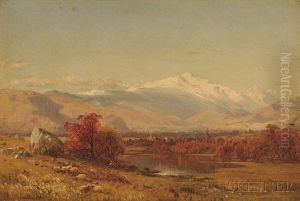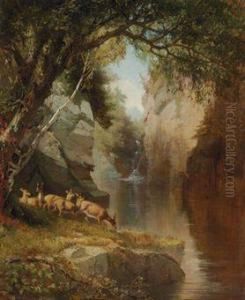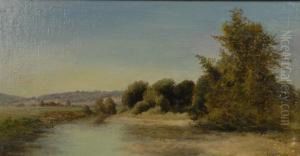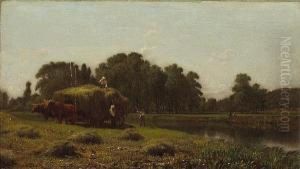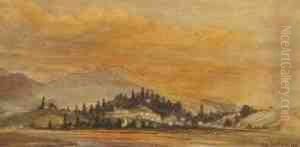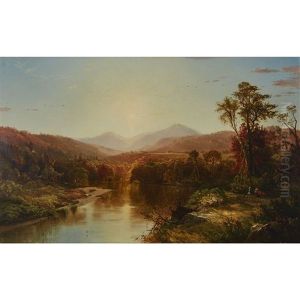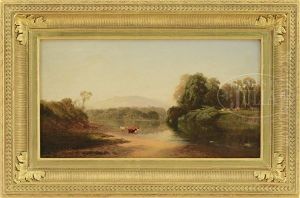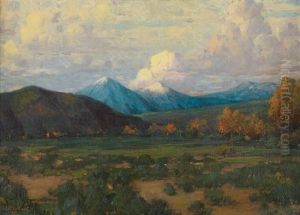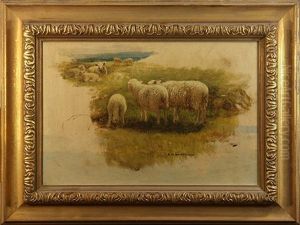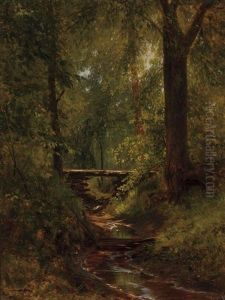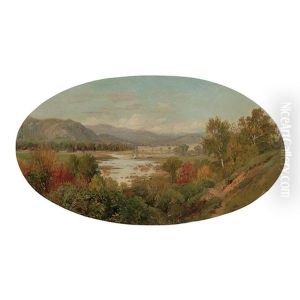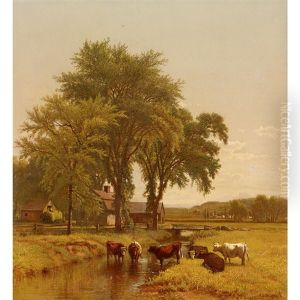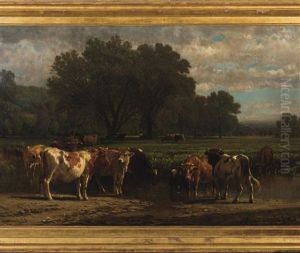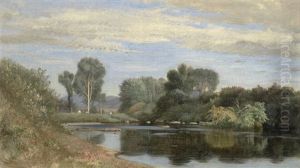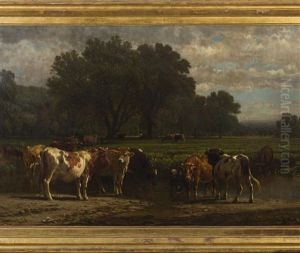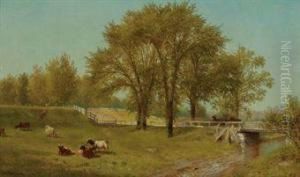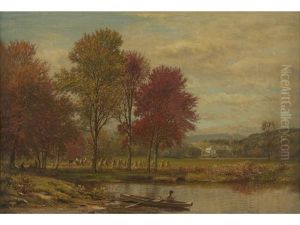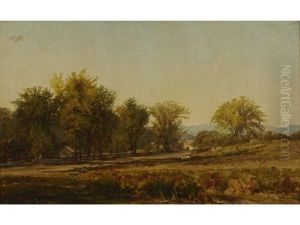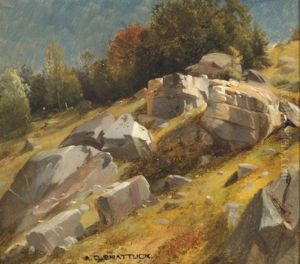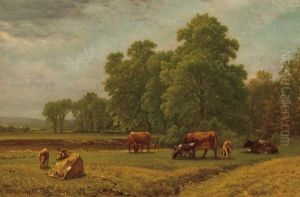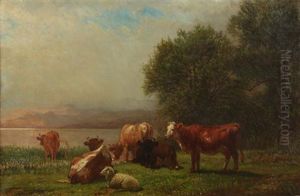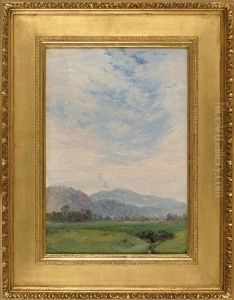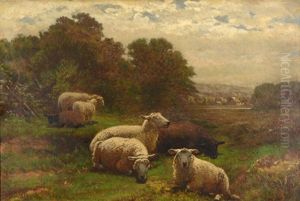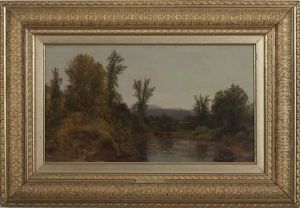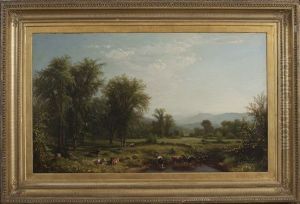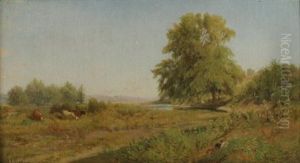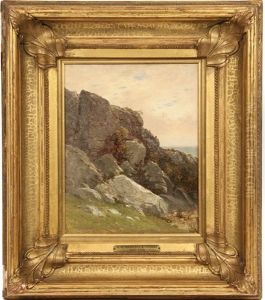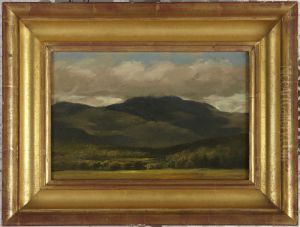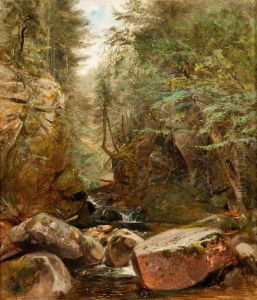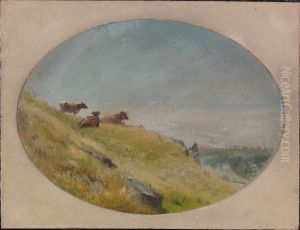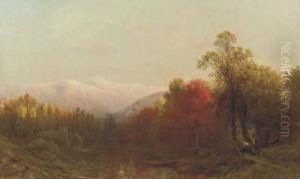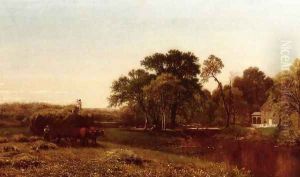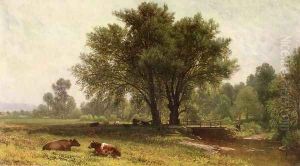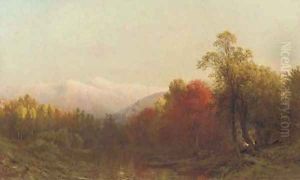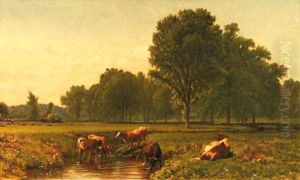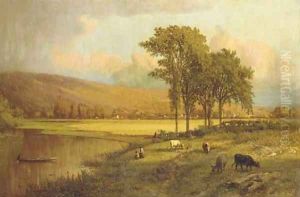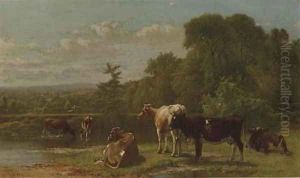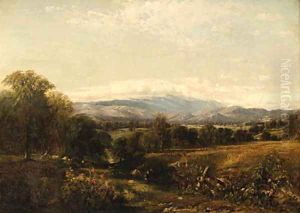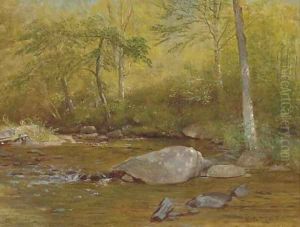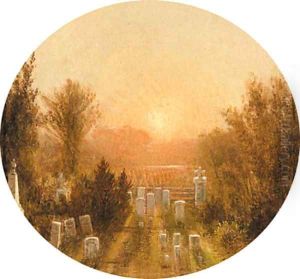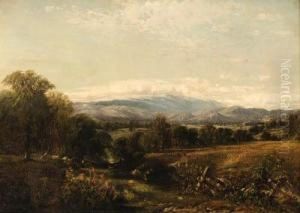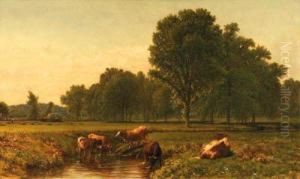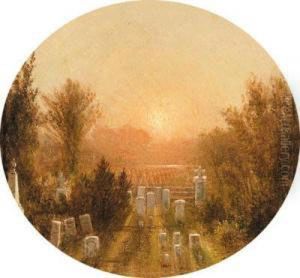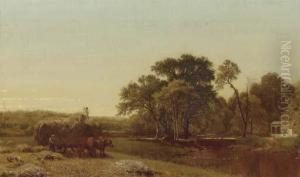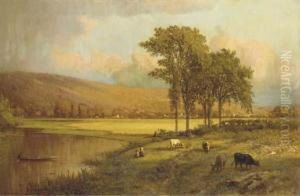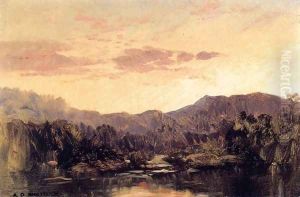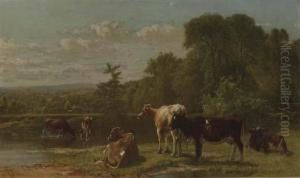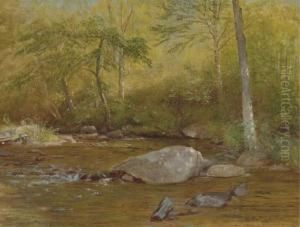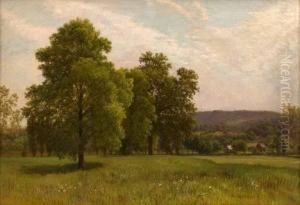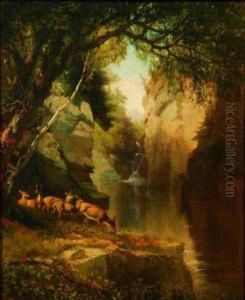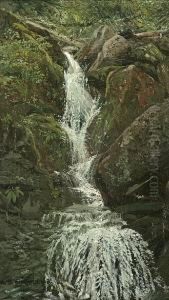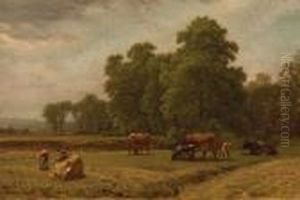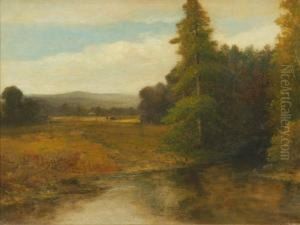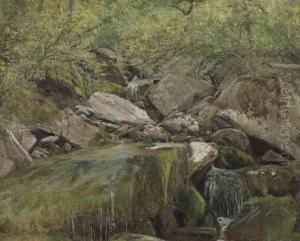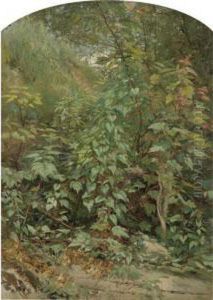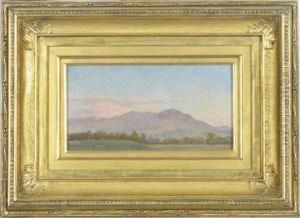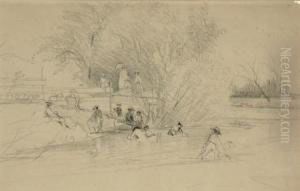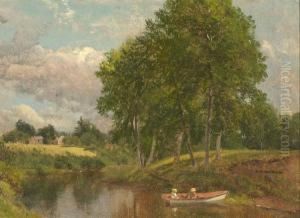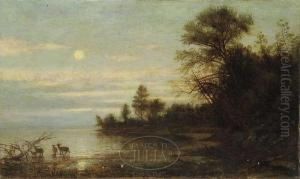Aaron Draper Shattuck Paintings
Aaron Draper Shattuck was an American painter, born on March 9, 1832, in Francestown, New Hampshire. He was best known for his landscapes that captured the idyllic pastoral scenes of New England. Shattuck's work is often associated with the Hudson River School, a mid-19th century American art movement embodied by a group of landscape painters whose aesthetic vision was influenced by romanticism.
Shattuck began his formal art training at the National Academy of Design in New York City in 1851, where he studied under notable artists such as Asher B. Durand and Jasper Cropsey, key figures in the Hudson River School. His early works reflect the detailed naturalism and emphasis on light and atmosphere characteristic of the movement. Shattuck quickly gained recognition for his skill in depicting the natural beauty of the American countryside.
In 1856, he was elected as an associate member of the National Academy, and by 1861, he became a full member, a testament to his artistic achievements and the respect he garnered among his peers. Shattuck’s landscapes were not just visually striking; they also evoked a sense of serene tranquility and a spiritual connection with nature, which were themes that resonated with viewers during the period.
Throughout his career, Shattuck was innovative and inventive, even patenting a special stretcher for canvases that allowed for the adjustment of tension without removing the painting from the frame. This invention was a significant contribution to the art community at the time.
Despite health issues that emerged in the later part of his life, Shattuck continued to paint, although his output diminished. He spent his final years in West Granby, Connecticut, where he passed away on July 1, 1928. Today, Shattuck’s works are part of important collections in various art institutions, including the Metropolitan Museum of Art in New York and the Smithsonian American Art Museum in Washington, D.C., serving as enduring examples of the Hudson River School’s legacy and the 19th-century American landscape tradition.
